Fashion Designers-Early 20th Century
Contemporary Events
- Until German occupation of Paris during World War II, Paris remains the dominant force in the evolution of Women’s fashion.
- Key trend setters are as follows: Paul Poiret (Late Edwardian), Coco Chanel (1920s), Madeline Vionnet (early 1930s), Elsa Schiaparelli (late 1930s).
- During World War II, attention shifted to American designers. These designers included Claire McCardell and film designer Adrian. Norman Norell and Pauline Trigger also found the spotlight.
- After the conclusion of the War, French Couture resumes its role at the center of international fashion design. However, American designers had proven that they were worth of contribution to innovation in dress. They had made their mark, fashion magazines (such as Vogue and Harper’s Bazaar) provided room for American designers to also be featured.
The Edwardian Era: 1900-1919
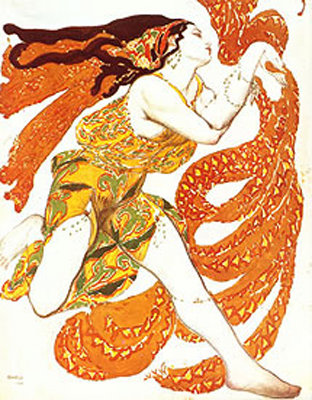
Costume Design for a Bacchante in “Narcisse” by Tcherepnin, 1911. Leon Bakst
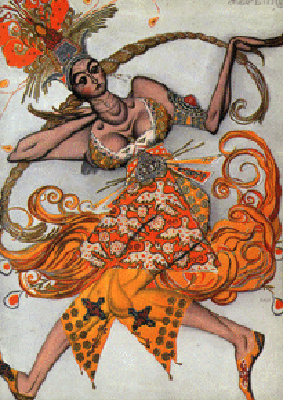
The Firebird, ballet costume, 1910. Leon Bakst
A theatrical designer Leon Bakst collaborated with Sergei Diaghilev in the creation of Scheherazade costumes for the Ballet Russes. The vividly colored exotic costumes caused a sensation when the production was performed in Paris in 1909. The vogue for “Orientalism” in Western fashion further solidified by this event.
Bakst’s costume designs had a profound impact on the Parisian fashion houses including Poiret, Worth and Paquin.
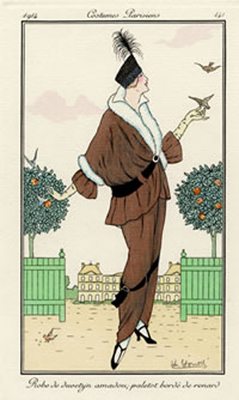
Paul Poiret fashion plate published in Journal des Dames et des Modes. 1912-14
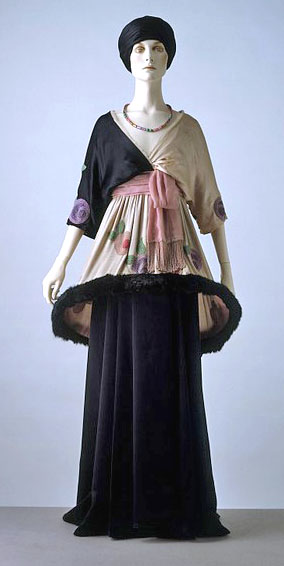
Mineret Tunic. “Sorbet” chiffon, satin, fur skirt and tunic, 1912. Designe by Paul Poiret.
Paul Poiret defined Edwardian fashion with garments such as the hobble skirt (Left) and the mineret tunic(Right). He is credited with disposing of the corset and leading the other Parisian designers in the use of Oriental influences. A fabulous self promoter, he takes the credit of being the pioneer of these ideas.
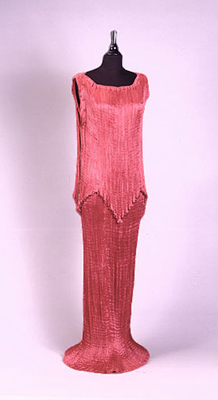
Fortuny Delphos Gown. Fortuny’s most famous design, the Greek inspire dress. Based on the “doric Chiton”.
Mariano Fortuny y Madrazo (Fortuny)was not a fashion
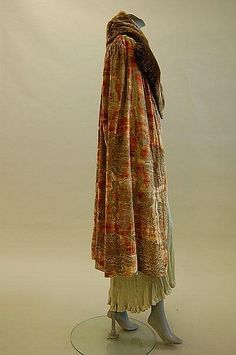
A cape of fine stencilled Mariano Fortuny velvet, 1920’s
designer by trade. He was an artist who happened to also work in the textile arts–creating wearable art that was highly influencial on the fashion world. His delphos gown was made of “magically” pleated silk that only his salon could clean and repleat correctly. Inspired by the classic lines of ancient Greece, these timeless gowns are prized collector items today. It is often forgotten that Fortuny also created wonderful silk velvet garments that are often more intricate and more impressive than the delphos gown.
1920s & 1930s

Little Black Dress, Coco Chanel, 1926
Gabrielle “Coco” Chanel‘s designs
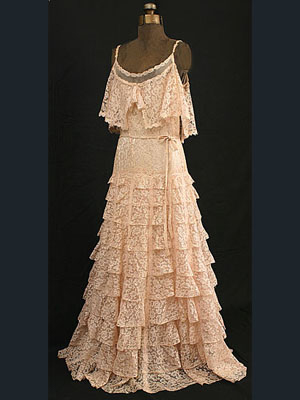
Chanel couture silk lace/tulle dress, c.1937. Label: Chanel with couture number on the back. Featured in the Chanel exhibit at the Metropolitan Museum of Art.
defined 1920s fashion. Among her innovations were “the little black dress” (the first black dress not intended to be worn for mourning or a funeral). While she is often identified with practical clothes, she also had a vogue for ultra feminine lace dresses–especially in the 1930s. Chanel also promoted a trend for large costume jewelry and long strands of beads.
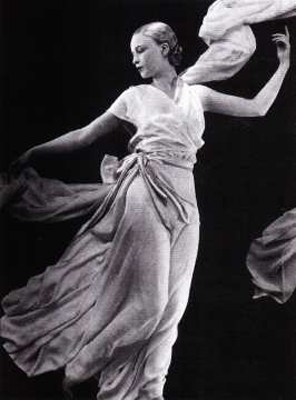
A Madeleine Vionnet dress. Titled Bas Relief, 1931, by Vogue photographer George Hoyningen-Huene.
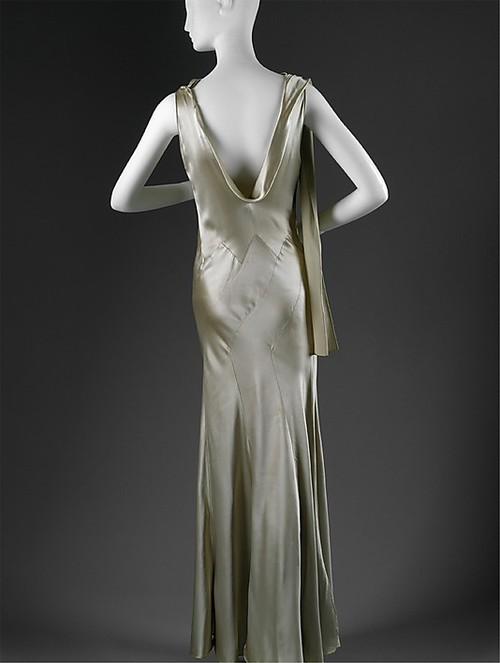
Madeleine Vionnet, 1932. The Metropolitan Museum of Art
Madeleine Vionnet placed an emphasis on
the cut of the gown rather than applied decoration. She is given credit for originating and mastering the bias cut, defining early 1930s fashions. The bias cut is a technique of cutting the garment to utilize the diagonal direction of the cloth which has a natural stretch and gracelful drape. This technique allowed the garment to accentuate and cling to the curves of the female body. Vionnet successfully brings back the natural female shape.
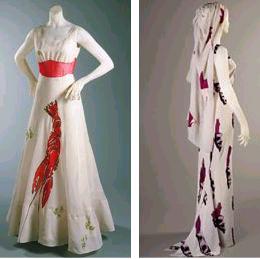
Lobster Dress and Tear Wedding Dress by Elsa Schiaparelli in collaboration with Salvador Dali. Philadelphia Museum of Art.
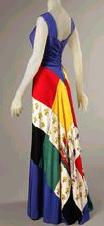
Evening Dress, Elsa Schiaparelli, 1940 The Philadelphia Museum of Art
Elsa Schiaparelli was known for smart, sophisticated witty clothes that often incorporated surrealist details. With a flare for theatricality, she often emphasized color and unusual decorative effects. These included the use of zippers, skirt and sweater combinations, and frequent use of her signature color–shocking pink.
The images below are more examples of Schiaparelli’s designs during the 1930s.
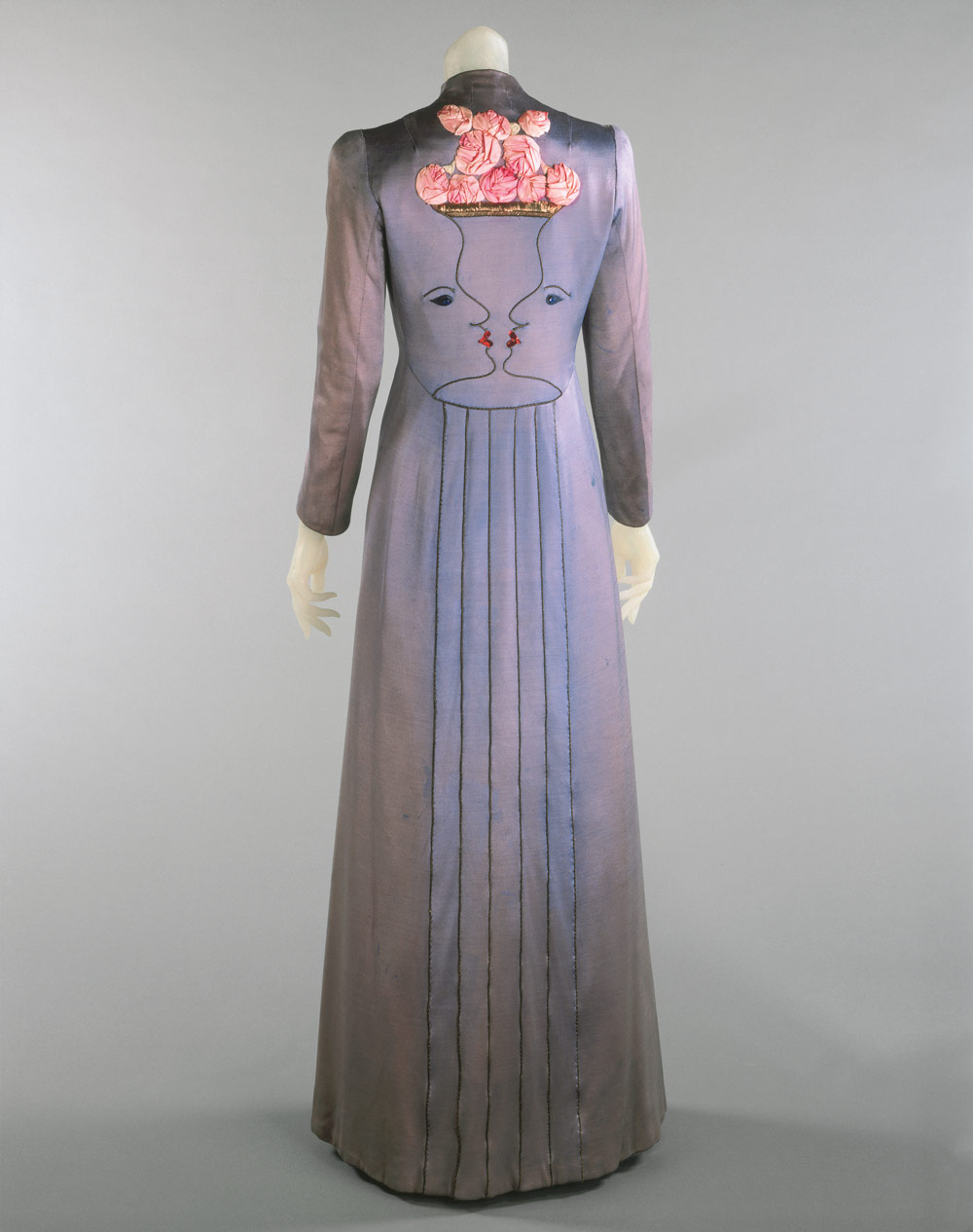
1937 – Elsa Schiaparelli Cocteau coat

The Skeleton Dress by Elsa Schiaparelli, 1938; The Circus Collection, Victoria and Albert Museum, London
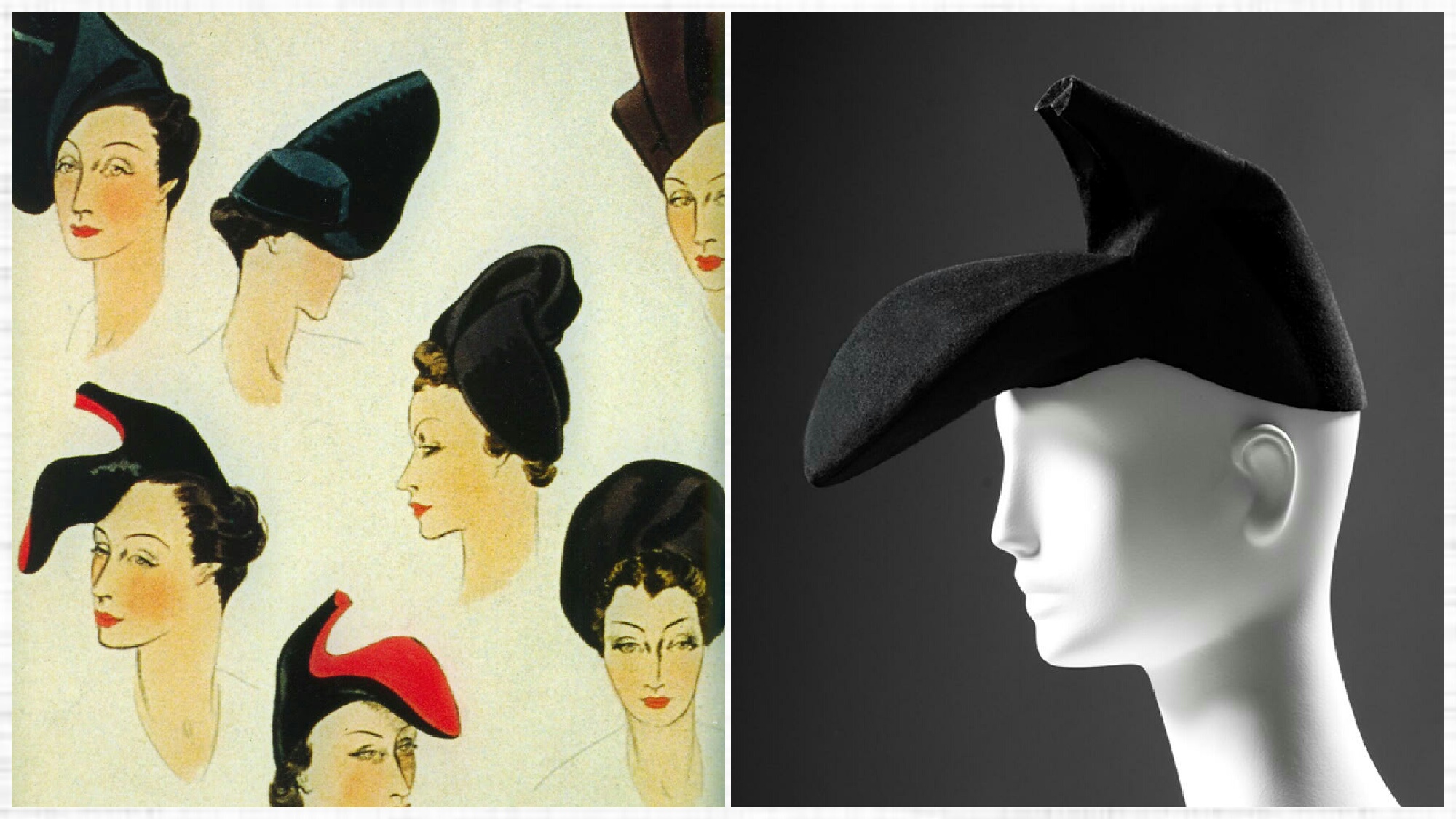
Shoe hat by Elsa Schiaparelli, courtesy of Palais Galliera
Recent Comments